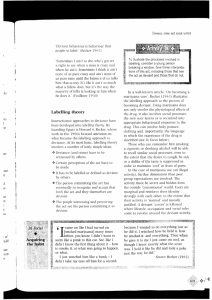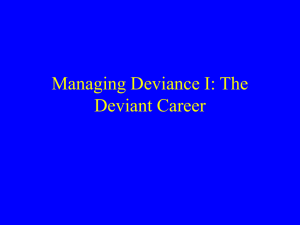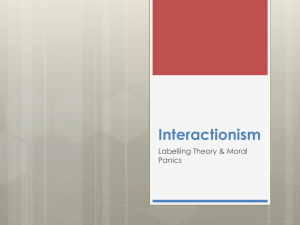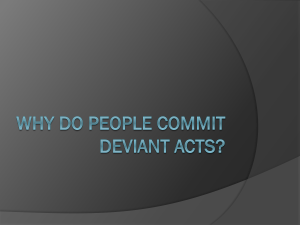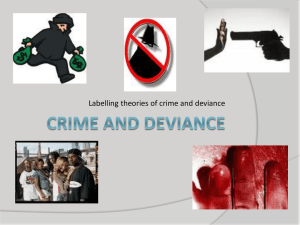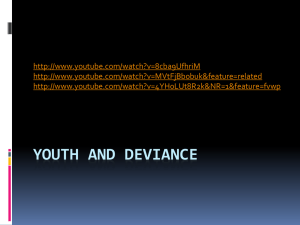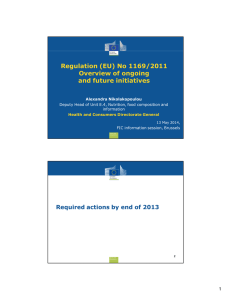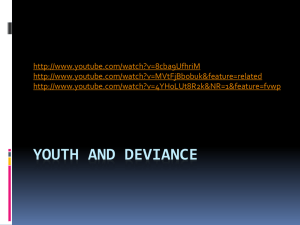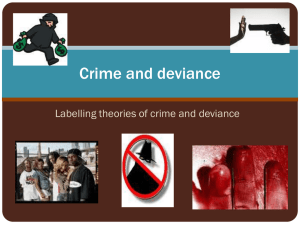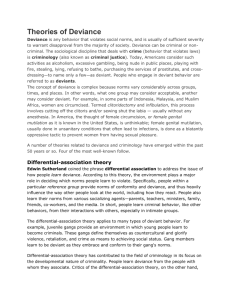Labelling Theory
advertisement
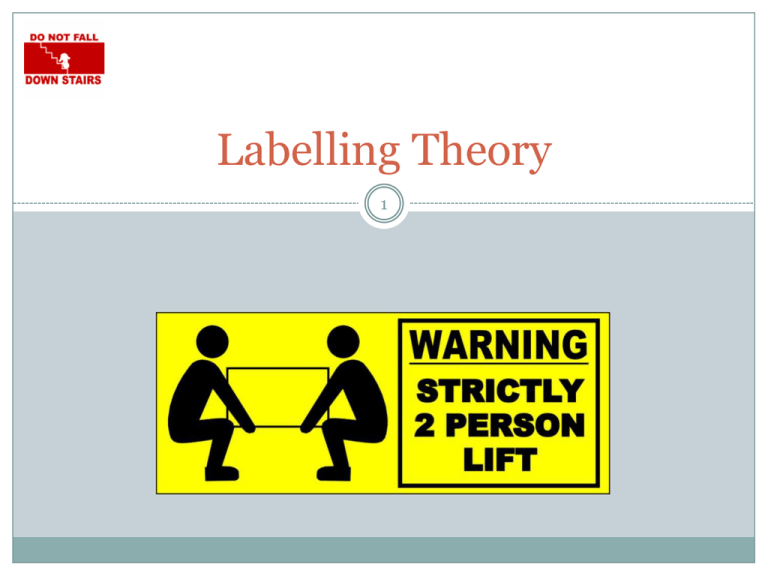
Labelling Theory 1 Aims 2 Define Labelling Theory Who Labels Whom? Howard Becker Jock Young Edwin Lemert Chambliss -Saints and Roughnecks Criticisms Definition 3 Labelling Theory is “An approach to the study of deviance which suggests that people become ‘deviant’ because certain labels are attached to their behaviour by political authorities and others” - (Giddens, 2006: p1022) Meaning that people are not inherently deviant or non-deviant by nature but rather that, they are seen as deviant by others, causing them to become deviant. Who Labels Whom? 4 “People who represent the forces of law and order, or are able to impose definitions of conventional morality on others, do most of the labelling” Thus by “wealthy for the poor, by men for women, by older people for younger people, and by ethnic majorities for minority groups” - (Giddens, 2006:p800) Howard Becker 5 Becker believed that the act done by the person was not deviant, rather that the labelling caused it to be viewed as such. Becker’s Outsiders (1963) shows that smoking of marijuana in the early 1960s, was a marginal activity, within sub-cultures. Also that it depended on acceptance into the culture, association with current users and disassociation with non-users. Meaning that labelling caused the users to come together and go ‘underground’. Edwin Lemert 1 6 Lemert (1972) created a theory for how deviance might occur through labelling. Primary deviance is the first deviant act committed by a person, sometimes it is normalised. If not the person is labelled as criminal. Secondary deviance is when the person accepts the label. This may lead to the reproduction of that behaviour more frequently. Becker described this as becoming a ‘master status’ or when the label becomes the most important part of the person’s identity and it is self-fulfilling. Edwin Lemert 2 7 Primary Deviance Secondary Deviance Saints and Roughnecks 8 William Chambliss (1973) studied 2 groups of delinquents in an American school. The Saints and the Roughnecks. Both were constantly involved in petty crimes such as drinking, truancy, vandalism and theft; however the roughnecks were constantly in trouble, whereas the Saints never had any. This was because of different views and resources between classes Criticisms 9 Assumes that there is no free will, in the fact that actors are passive in the labelling process and accept the label given to them. It does not take into account the reasons for committing the deviant behaviour e.g. need? want? No definite proof to suggest labelling leads to deviancy amplification. http://www.youtube.com/watch?v=r-UBjL1zlgM Funny Labels 10
